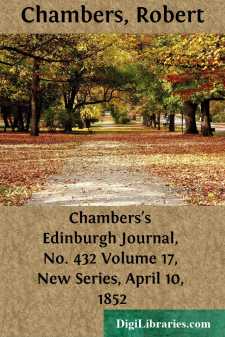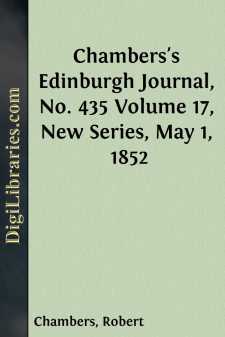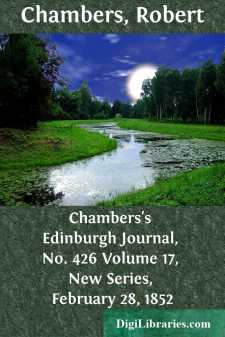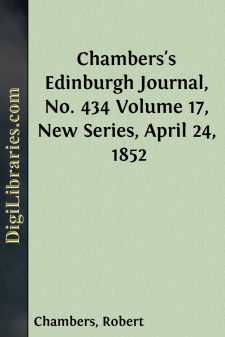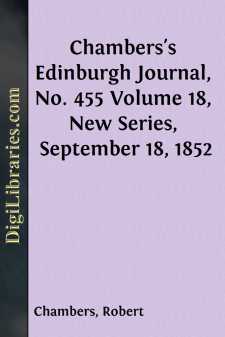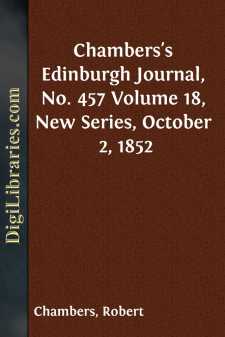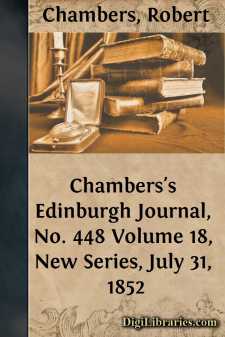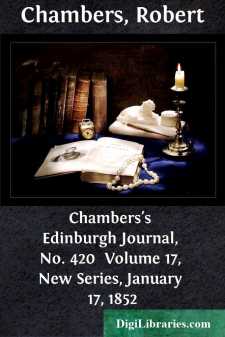Categories
- Antiques & Collectibles 13
- Architecture 36
- Art 48
- Bibles 22
- Biography & Autobiography 813
- Body, Mind & Spirit 142
- Business & Economics 28
- Children's Books 16
- Children's Fiction 13
- Computers 4
- Cooking 94
- Crafts & Hobbies 4
- Drama 346
- Education 46
- Family & Relationships 57
- Fiction 11829
- Games 19
- Gardening 17
- Health & Fitness 34
- History 1377
- House & Home 1
- Humor 147
- Juvenile Fiction 1873
- Juvenile Nonfiction 202
- Language Arts & Disciplines 88
- Law 16
- Literary Collections 686
- Literary Criticism 179
- Mathematics 13
- Medical 41
- Music 40
- Nature 179
- Non-Classifiable 1768
- Performing Arts 7
- Periodicals 1453
- Philosophy 64
- Photography 2
- Poetry 896
- Political Science 203
- Psychology 42
- Reference 154
- Religion 513
- Science 126
- Self-Help 84
- Social Science 81
- Sports & Recreation 34
- Study Aids 3
- Technology & Engineering 59
- Transportation 23
- Travel 463
- True Crime 29
Chambers's Edinburgh Journal, No. 432 Volume 17, New Series, April 10, 1852
by: Robert Chambers
Description:
Excerpt
THE MEDIÆVAL MANIA.
History is said to be a series of reactions. Society, like a pendulum, first drives one way, and then swings back in the opposite direction. At present, we may be said to be returning at full speed towards a taste for everything old, neglected, and for ages despised. Science and refinement have had their day, and now rude nature and the elemental are to be in the ascendant. In our boyhood, we learned the Roman alphabet; but youngsters now had need to add a knowledge of black-letter, which is rapidly getting back into fashion. Perfection is only to be found in the darkness and ignorance of the middle ages.
It is proper, no doubt, to get rid of what is tame and spiritless in art; and it must be owned that nearly everything that was done in architecture and decoration during the Georgian era was detestable. But it is one thing to reform, and another to revolutionise. Let us by all means go to nature for instruction; but nature under the exercise of cultivated feeling—selecting what tends to ennoble and refine, not that which degrades and sends us back to forms and ideas totally out of place in the nineteenth century, and which, for that very reason, can have nothing but a temporary reign, to be followed in the succeeding age by a violent reaction.
On a former occasion, we drew attention to this tendency towards mediævalism as regards ornamental design, and took the Great Exhibition to witness the fact. We have also pointed to that strange phenomenon, the rise anew of monastic institutions among us, long after their object is accomplished, giving a spectre-like expression to an obsolete idea; we have exposed, likewise, the inclination of the working-classes to trust to the protection, and, on every emergency, claim as a matter of right the aid of the wealthy, thus wilfully and deliberately returning to the condition of serfdom: we have now to trace the mediæval mania in a department where, notwithstanding all this ominous conjunction of symptoms, its appearance is truly surprising—in the department of high art in painting.
Our readers need not fear that we are about to inflict on them a scientific dissertation. All we wish to do, is to explain to them a word, with the meaning of which many of them are very imperfectly acquainted, and by the mere explanation, to enable them to determine upon its claims to designate—not merely a school, but the school of art, destined, if founded in truth and nature, to overturn every other. This word—Pre-Raphaelitism—is taken from the name of one of the Italian masters, and it is necessary, in order to understand the question, to ascertain what were the circumstances and the genius that have thus set him up as a landmark in the history of art.
After the fall of the Western Empire, the fine arts were lost, and their productions literally buried in the wreck. The minds of the composite nations that arose in Europe had no guide. Men were left to their own instincts, only faintly aided by the ruins and traditions of degenerate Rome; and each series of countries had its own style of art, framed or adopted by the genius of the people....


